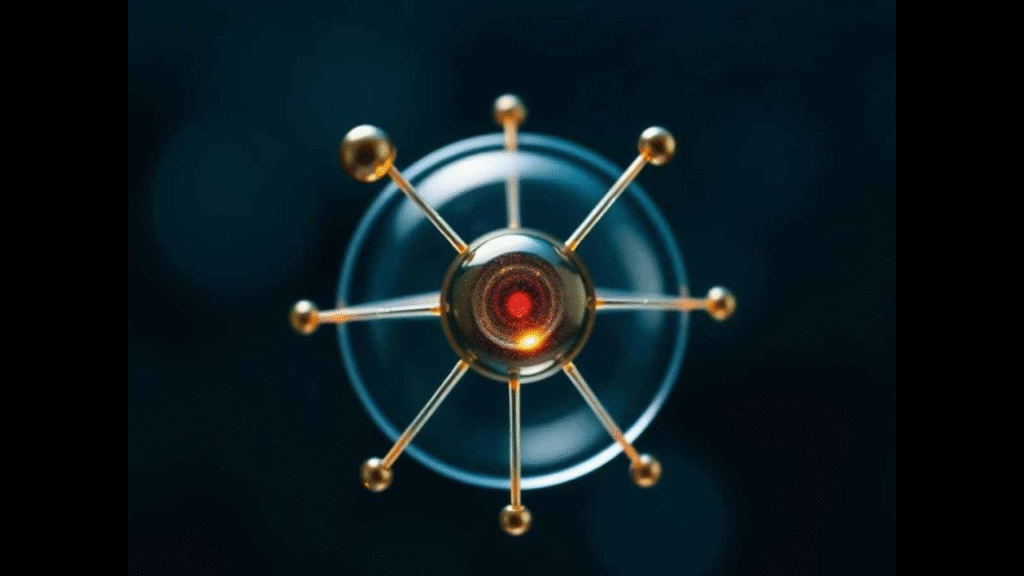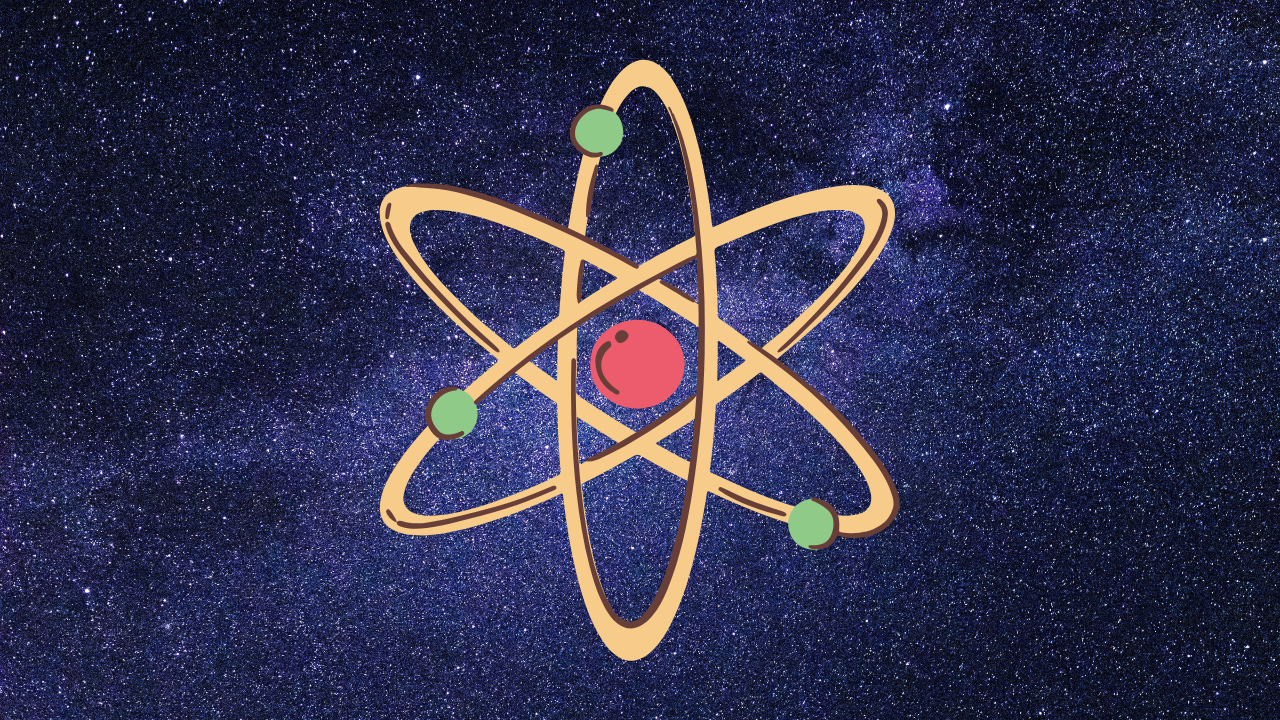Have you ever wondered what an atom really looks like? For decades, atoms—the basic building blocks of all matter—were considered invisible. We could understand their behavior through theory, models, and simulations, but we couldn’t actually see one. That is, until now.
Thanks to advanced imaging technologies, scientists have succeeded in imaging a single atom, and it’s a discovery that’s shaking up the world of chemistry, nanotechnology, and quantum science.
Who Captured a Single Atom?
One of the most iconic breakthroughs came in 2018 when Dr. David Nadlinger and his team at the University of Oxford photographed a single strontium atom using a standard digital camera with long exposure. The atom was trapped between electrodes and illuminated with a laser, emitting light that made it visible to the naked eye. This image won the EPSRC science photo competition, proving that even everyday technology, when precisely tuned, could capture the seemingly invisible.
Advancements in 2023:
In 2023, researchers made further strides using quantum electron microscopy and scanning transmission electron microscopy (STEM) to capture not only the positions of atoms, but also their chemical states and bonding interactions in real-time. These techniques allowed scientists to observe how individual atoms react, move, and form bonds, pushing the boundaries of what’s possible in molecular science and materials engineering.
These evolving imaging capabilities are not just capturing static pictures—they're revealing the dynamic life of atoms.
Let’s explore what this groundbreaking achievement means and how it could shape the future of scientific research and practical applications.

What Does It Mean to “Image a Single Atom”?
Imaging a single atom means capturing a visual representation of one atom using incredibly powerful microscopy techniques. This goes far beyond what a regular microscope can do. We’re talking about machines that can detect surfaces and shapes at the atomic scale.
Tools That Made It Possible:
- Scanning Tunneling Microscopy (STM)
- Atomic Force Microscopy (AFM)
- Quantum electron microscopy
These tools operate at nanometer or even picometer levels, allowing scientists to map and visualize atoms with astonishing precision.
Why it Matters in Chemistry
In chemistry, atoms are everything. Being able to see and understand them in their most basic form opens the door to countless possibilities.
Key Impacts on Chemistry:
- Validation of atomic theories: Imaging provides concrete visual evidence to support decades of theoretical chemistry.
- Better understanding of atomic bonding: Visualizing electron densities and atomic structures helps in designing more accurate molecular models.
- Improved reaction control: Observing how atoms interact in real time could lead to ultra-precise chemical synthesis.
Atomic-Level Imaging and Molecular Design
Seeing a single atom also revolutionizes how we design molecules and materials.
Applications in Molecular Design:
- Tailor-made drugs with atomic-level targeting
- Advanced catalysts with optimized atomic configurations
- Molecular machines designed from the bottom up
By zooming into the atomic world, chemists can now build from the atom up rather than molecule down. This could lead to breakthroughs in green chemistry, energy storage, and material science.

What This Means for Nanotechnology
Nanotechnology operates on the scale of atoms and molecules. This breakthrough gives nanotechnologists new power to manipulate and assemble matter at the single-atom level.
Examples of Potential Developments:
- Atomic-scale electronics
- Single-atom sensors
- Quantum dots and nano-switches
- Atomically thin materials like graphene
This level of precision opens doors to new inventions in computing, materials, and energy solutions.
Single Atom Manipulation: Moving Beyond Imaging
Seeing an atom is only the beginning. Now, scientists can even move or manipulate single atoms using the same high-precision tools.
Known as:
- Atomic manipulation
- Bottom-up nanofabrication
This technique has been used to:
- Build custom nanoscale structures
- Create atomic-scale circuits
- Test new quantum behaviors
The implications for chemistry, physics, and material science are staggering.
Real-World Impact and Applications
While imaging a single atom might sound academic, it has very practical implications.
Industry Impacts:
- Pharmaceuticals: Improved molecular design and drug delivery systems
- Electronics: Ultra-small transistors and semiconductors
- Energy: Better battery materials and hydrogen storage solutions
- Environment: More efficient catalysts for pollution control
This breakthrough will help industries design smarter, greener, and more efficient products.

The Role of Advanced Microscopy
At the heart of this achievement lies advanced microscopy technology.
Key Techniques:
- Scanning Tunneling Microscopy (STM): Measures electrical current changes as a sharp tip scans a surface
- Atomic Force Microscopy (AFM): Uses a tiny probe to “feel” the surface of atoms
- Electron Microscopy: Uses electron beams instead of light to visualize structures at atomic resolution
These tools have transformed scientific research by allowing us to see the unseen.
Challenges and Limitations
As with any groundbreaking discovery, there are limitations to keep in mind.
Current Challenges:
- High cost of equipment
- Need for ultra-clean environments
- Limited accessibility in developing countries
- Technical complexity requiring expert operation
Despite these, ongoing advancements are making these technologies more accessible and scalable.
The Future of Chemistry with Atom-Level Imaging
So, where do we go from here? Imaging a single atom is just the beginning.
What the Future Holds:
- Real-time observation of chemical reactions at the atomic level
- Predictive chemistry using AI and machine learning based on visualized data
- Quantum computing breakthroughs through atom-scale manipulation
- Increased global collaboration in atomic-scale research
This discovery has already reshaped how we think about matter, and it will continue to push the boundaries of what’s possible.

Final Thoughts
The ability to image a single atom marks a turning point in modern science. What was once a theoretical construct in textbooks is now visible and interactive. This breakthrough enhances our understanding of the atomic world and gives chemists, engineers, and technologists new tools to create the future.
From designing better medicines to building smaller, smarter electronics, the applications are endless. As technology continues to evolve, the chemistry of tomorrow will be deeply shaped by the atomic clarity we are gaining today.
One atom at a time, we are zooming into a future full of possibility.









